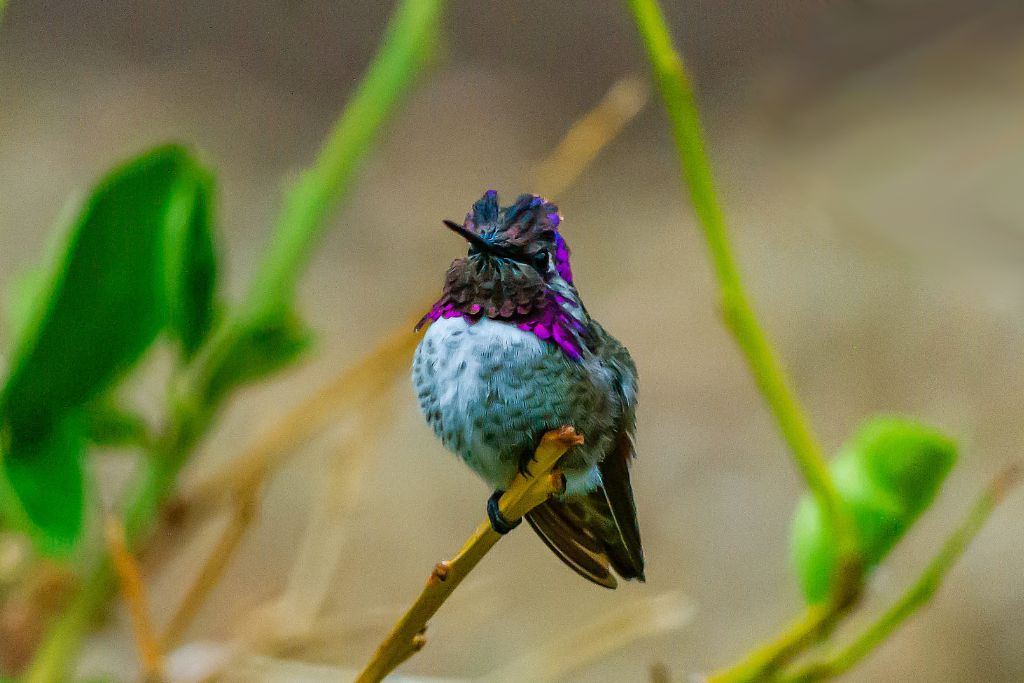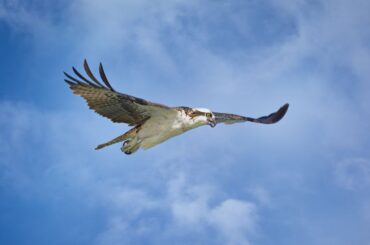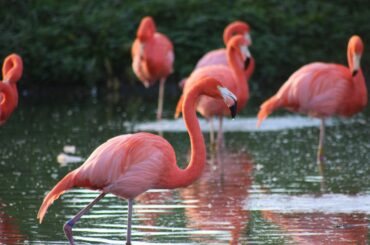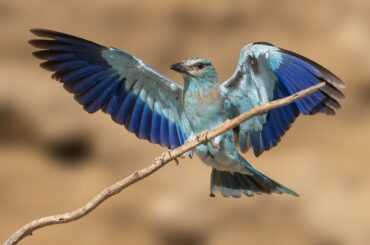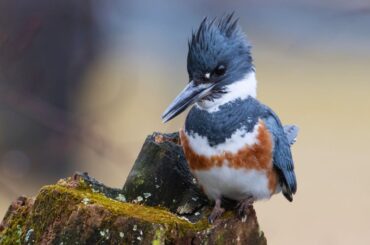Are you ready to discover the vibrant world of hummingbirds in Florida? Imagine encountering not one but eleven mesmerizing species of these tiny avian gems fluttering through the lush landscapes of the Sunshine State.
From the dazzling ruby-throated hummingbird, known for its vibrant red throat, to the enchanting black-chinned hummingbird with its iridescent green plumage, Florida offers a haven for bird watchers and enthusiasts alike.
Find out what makes these fascinating birds a beloved choice among experienced bird watchers and nature enthusiasts passionate about the outdoors.
What Does a Hummingbird Look Like In Florida?
Florida hummingbirds are easily identifiable and fun to watch. These tiny birds are 3 to 5 inches long. They have bright colors, despite their small size. Although most are green, some Florida hummingbirds have iridescent blue or red throats.
These amazing birds can hover and move quickly. They can balance and fly precisely due to their rapid wingbeats.
Florida’s warm temperature and various landscapes attract many hummingbird species. Birdwatchers flock to Florida for its gardens, parks, and natural places.
Hummingbirds eat floral nectar. They reach deep into the flower’s corolla to get the sugary nectar with long, slender bills and tongues. They get protein and nutrients from nectar, tiny insects, and spiders.
1. Ruby-Throated Hummingbird
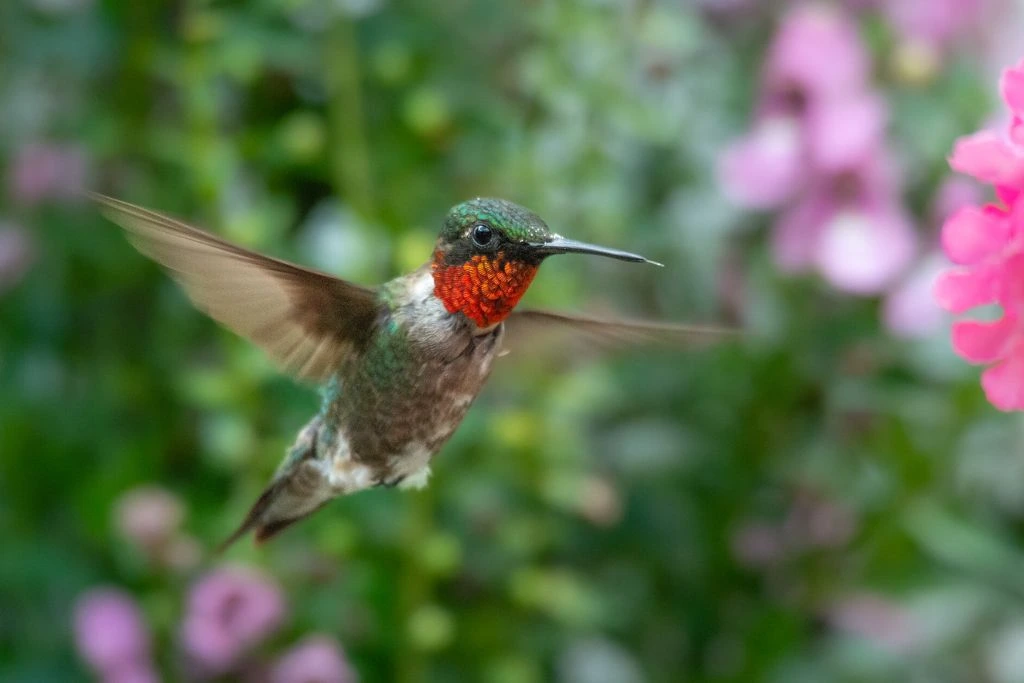
- Kingdom: Animalia
- Phylum: Chordata
- Class: Aves
- Order: Apodiformes
- Genus: Archilochus
- Species: A. colubris
The ruby-throated hummingbird (A. colubris) is a small and colorful bird in Eastern North America, including Florida. It gets its name from the vibrant ruby-red throat patch found in males, while females have a white throat.
These hummingbirds average 3 to 3.75 inches long. With wings that beat up to 53 times per second, they can hover and fly in all directions.
Ruby-throated hummingbirds feed on flower nectar and supplement their diet with insects and tree sap. During nesting and breeding, females construct cup-shaped nests made of plant fibers and spider silk, usually on tree branches. They lay 1 to 3 eggs and raise their young until they leave the nest.
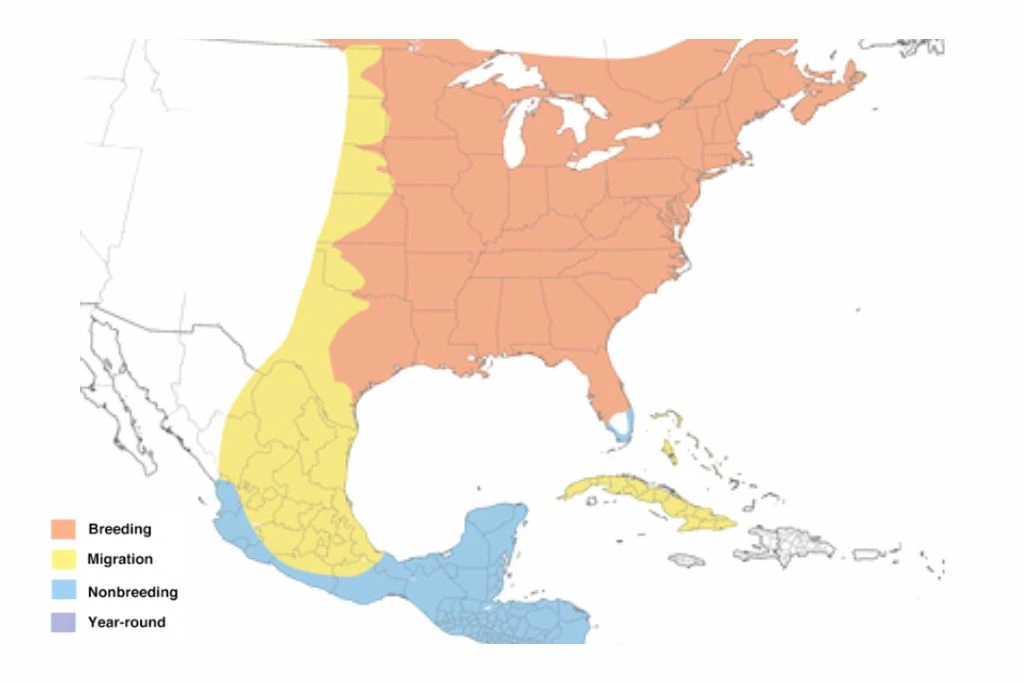
2. Rufous Hummingbird
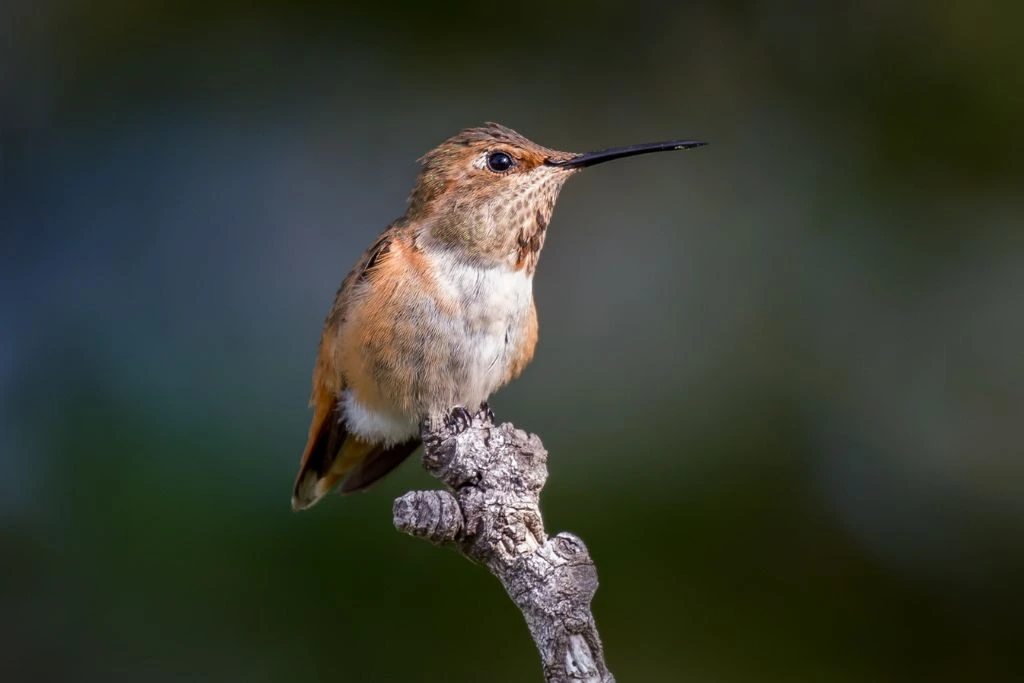
- Kingdom: Animalia
- Phylum: Chordata
- Class: Aves
- Order: Apodiformes
- Genus: Selasphorus
- Species: S. Rufus
Another exciting species seen during migration in Florida is the Rufous hummingbird (S. rufus). These male hummingbirds are larger than ruby-throated ones, measuring 2.75 to 3.5 inches. They have a fork-shaped seat, but they have a rounder tail.
The back and sides of a Rufous hummingbird are a bright dark brown color. They are known for their extraordinary long-distance migrations. From where they breed in North America to where they spend the winter in Mexico, they move up to 3,900 miles each way.
These species are very territorial and fight hard to protect the places where they eat. They mainly eat nectar from different kinds of flowers, but they also eat small animals.
During the breeding season, the females make nests from plant fibers and spider silk, usually hanging from tree branches. They lay 2 to 3 eggs and care for their young until they can fly away.
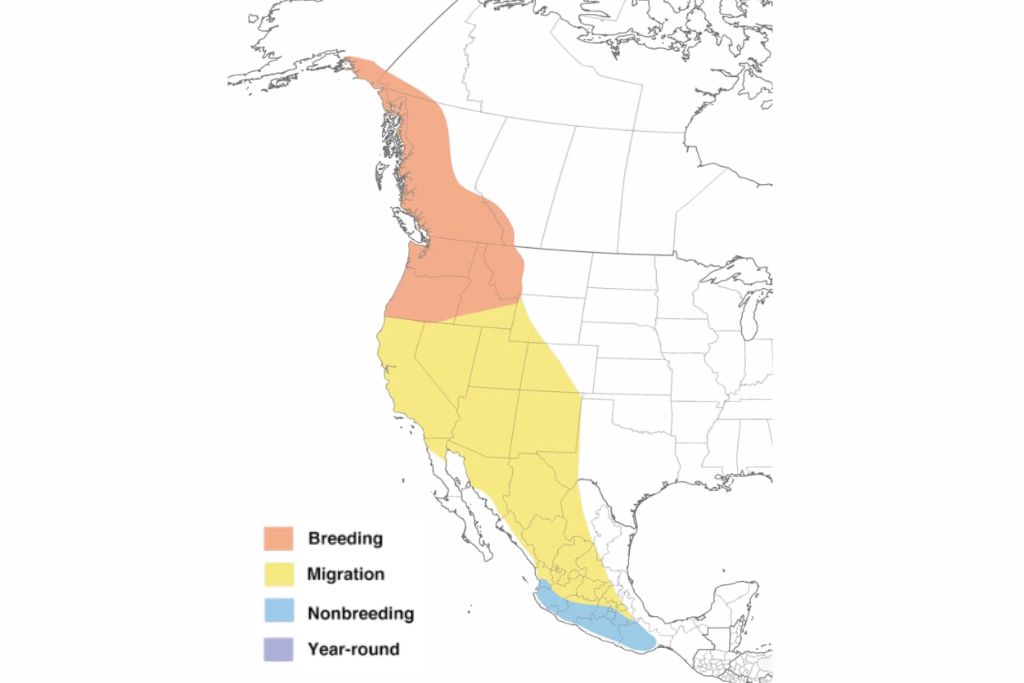
3. Bahama Woodstar
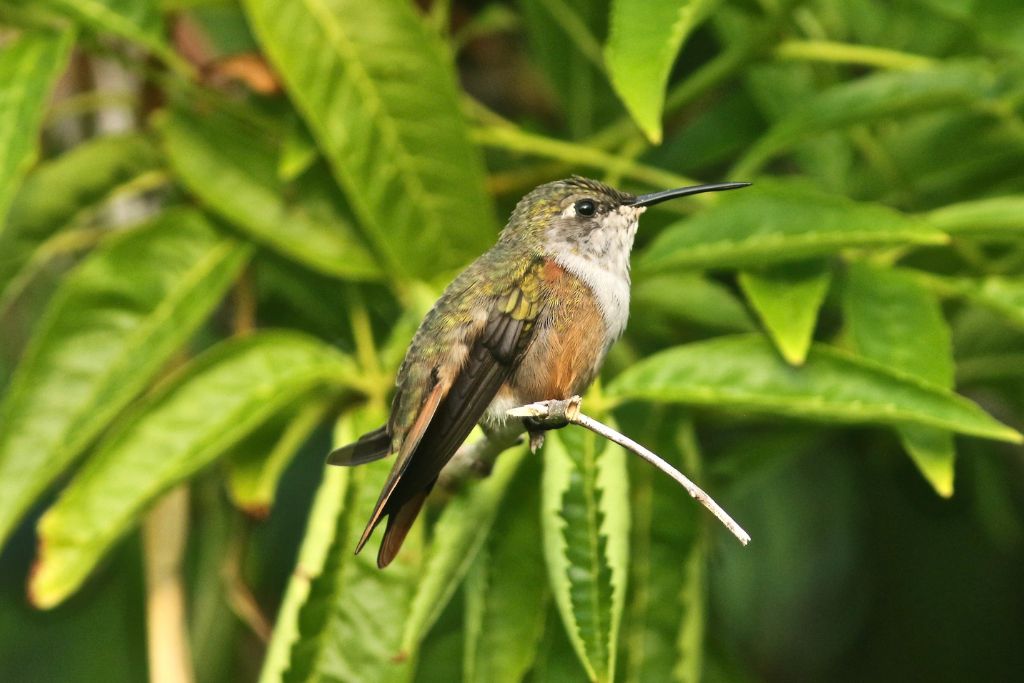
- Kingdom: Animalia
- Phylum: Chordata
- Class: Aves
- Order: Apodiformes
- Genus: Nesophlox
- Species: N. evelynae
The Bahama woodstar is a small species of hummingbird that is only 8 to 9.5 cm (3.1 to 3.7 in) long and weigh between 2.4 and 3g. Their backs are green and gold, wings are brown, tails are a color that looks like a dark purple-black, undersides are olive-buff, and the males and females have white or cinnamon-colored sides.
The Bahamas and the Turks and Caicos Islands are where Bahama woodstars live most of the time. They live in coastal and lowland places with shrubs, gardens, and the edges of forests.
During the breeding season, females build cup-shaped nests out of plant fibers, generally placed on tree branches. They lay 1 to 2 eggs and care for their young until they can fly away.
4. Black-Chinned Hummingbird
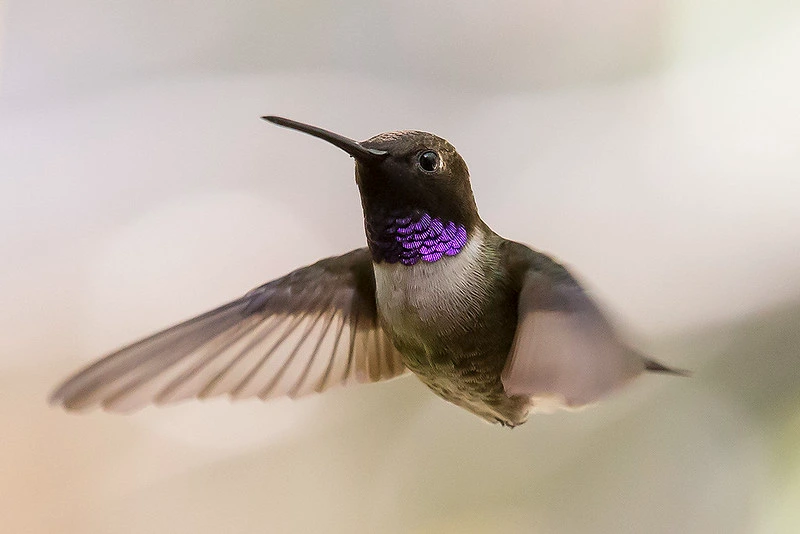
- Kingdom: Animalia
- Phylum: Chordata
- Class: Aves
- Order: Apodiformes
- Genus: Archilochus
- Species: A. alexandri
Black-chinned hummingbird (A. Alexandria) is between 3.5 and 4 inches long. Their name comes from the black patch on their throat, which gives them a slim body and a shiny green back. The female’s bottom is light gray, while the male’s is white.
Deserts, mountain woods, and coastal areas in Western North America are appropriate for these hummingbirds. They’re known for their airborne prowess.
Black-chinned hummingbirds mostly eat nectar from a wide range of flowering plants. They also eat small animals.
During nesting, females make cup-shaped nests from plant fibers and spider silk. These nests are usually put on tree branches or shrubs. They lay 2 eggs and care for their young until they fly away independently.
The Black-Chinned Hummingbird is a rare visitor to Florida. It is usually only seen during flights or on rare occasions.
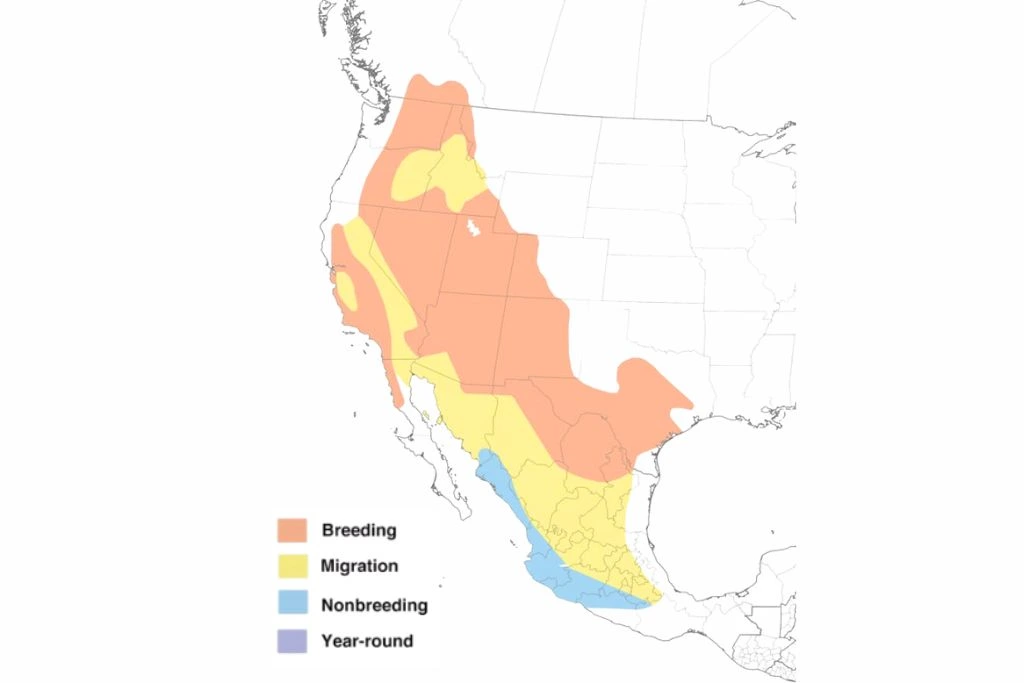
5. Anna’s Hummingbird
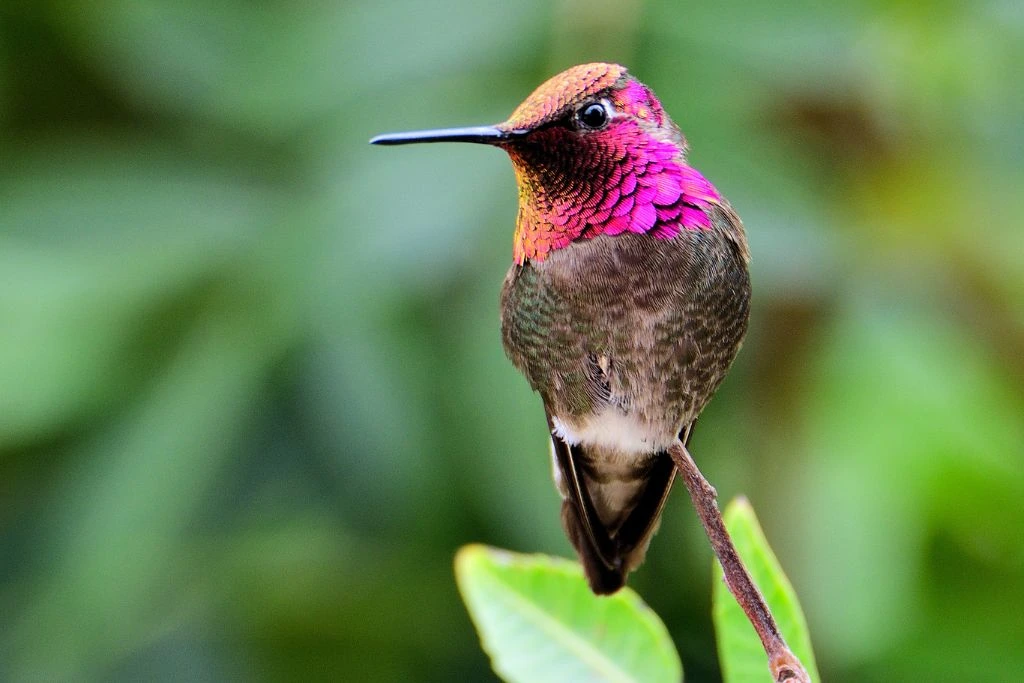
- Kingdom: Animalia
- Phylum: Chordata
- Class: Aves
- Order: Apodiformes
- Genus: Calypte
- Species: C. anna
Anna’s hummingbird is a species that is between 3.9 and 4.3 inches long. The back and head of these birds are metallic green, and their undersides are gray. The throats and heads of males are a bright rose pink, while the necks of females are a pale gray.
These hummingbirds live in parts of California and the Pacific Northwest. They are native to the West Coast of North America. They live in parks, woods, and coastal scrublands, among other places.
Anna’s hummingbirds are known for their unique courtship displays, in which the males make high-pitched buzzing sounds and do amazing aerial dives.
Most of the time, they eat juice from flowers, but sometimes they eat small animals.
The females build cup-shaped homes out of plant fibers and spider silk. Most of the time, they hang the nests from bushes. They have 2 eggs they care for until they are old enough to fly away.
Anna’s Hummingbirds aren’t often seen in Florida, but they do show up sometimes.
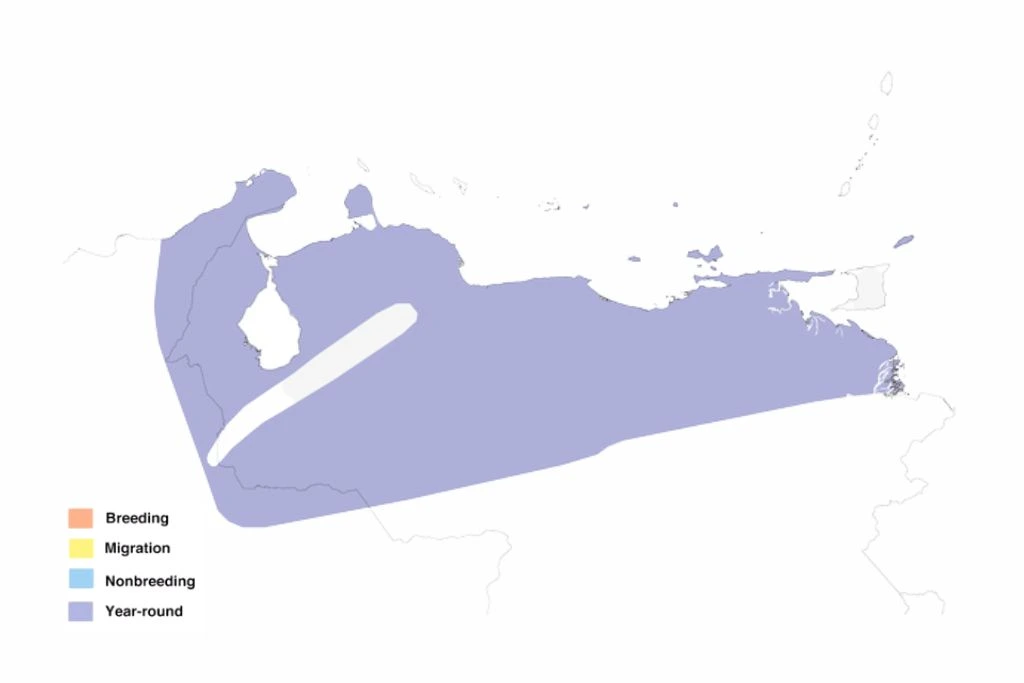
6. Allen’s Hummingbird
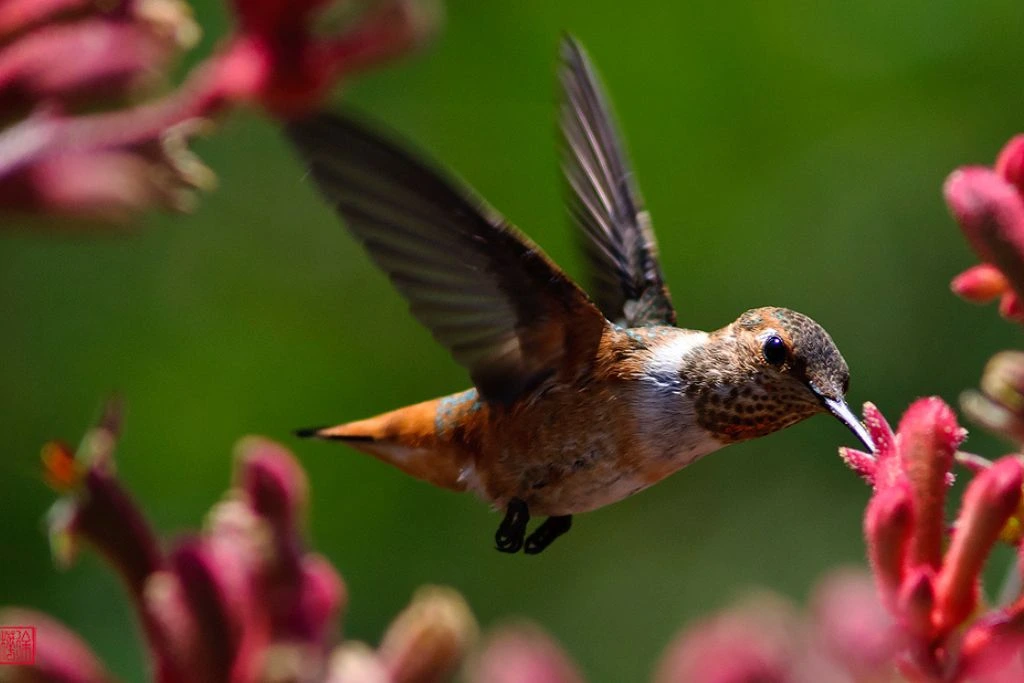
- Kingdom: Animalia
- Phylum: Chordata
- Class: Aves
- Order: Apodiformes
- Genus: Selasphorus
- Species: S. sasin
Allen’s hummingbird (S. sasin) is a small species between 3.5 and 4 inches long. The males’ backs and crowns are shiny green, and their throats and breasts are bright orange-red. The backs of females are greener, and the undersides are a pale gray.
The coasts of California and Oregon are where these hummingbirds live. They are known for their unusual ways of courting, which include flying upside down and making high-pitched sounds.
Allen’s Hummingbirds eat mostly nectar from different flowers, but they also eat small animals.
Nests that resemble cups are made from plant fibers and spider silk, hung from tree branches. The female lays 2 eggs, which she nourishes until they are ready to fly.
The average lifespan of a hummingbird is between 3 and 5 years, but there have been reports of individuals living as long as 10 years.
In Florida, sightings of Allen’s hummingbirds are not particularly common, but they do occur on occasion.
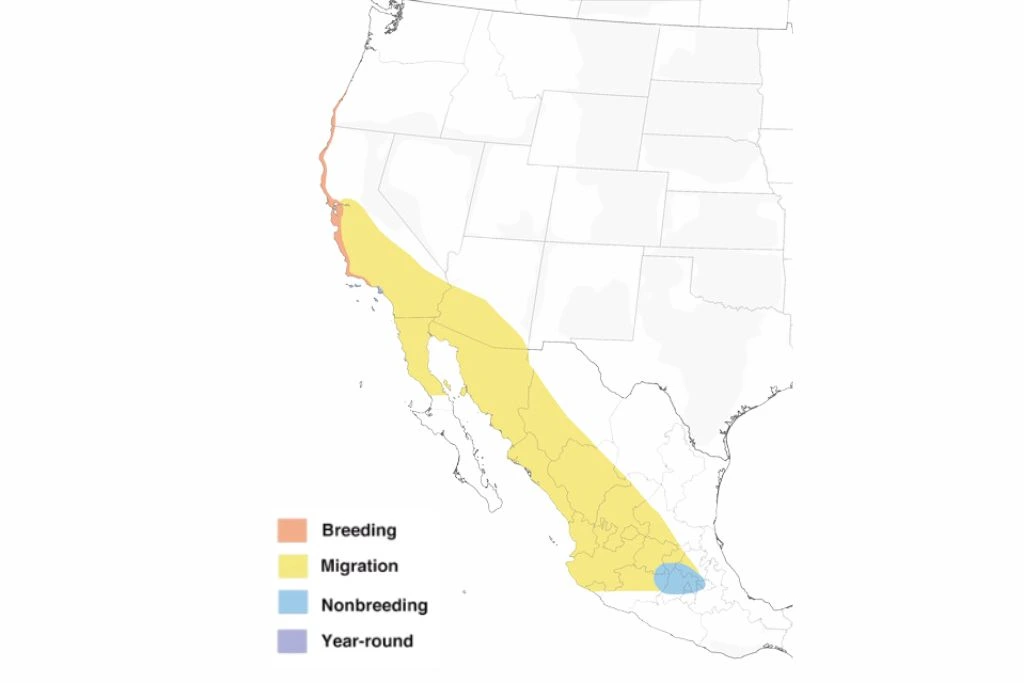
7. Costa’s Hummingbird
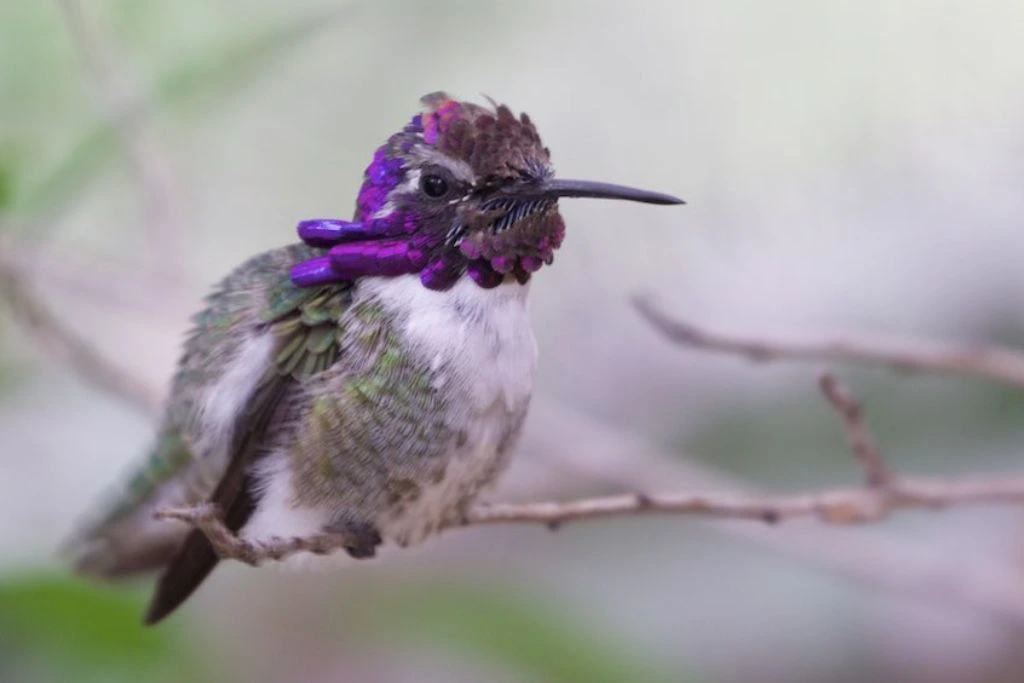
- Kingdom: Animalia
- Phylum: Chordata
- Class: Aves
- Order: Apodiformes
- Genus: Calypte
- Species: C. costae
A Costa’s hummingbird (C. costae) is about 3 to 3.5 inches long. The males have a metallic green back and cap, and their throats and foreheads are bright purple. The females’ undersides are a light greenish color, and their backs are a darker green.
Hummingbirds live in the deserts of the Southwestern United States and Mexico. Because of this, these areas are where these birds are from.They have learned to live in hot, dry places and are known for their ability to hover over desert flowers and get juice from them.
Costa’s hummingbirds make nests from plant fibers that look like cups and hang them from tree branches or bushes. The female lays 2 eggs and takes care of them until they are ready to fly away.
A hummingbird can live for up to 10 years. However, the usual lifespan is between 3 and 5 years.
It is unusual for Costa’s Hummingbirds to visit Florida. Typically, they are only seldom or during flights visible.
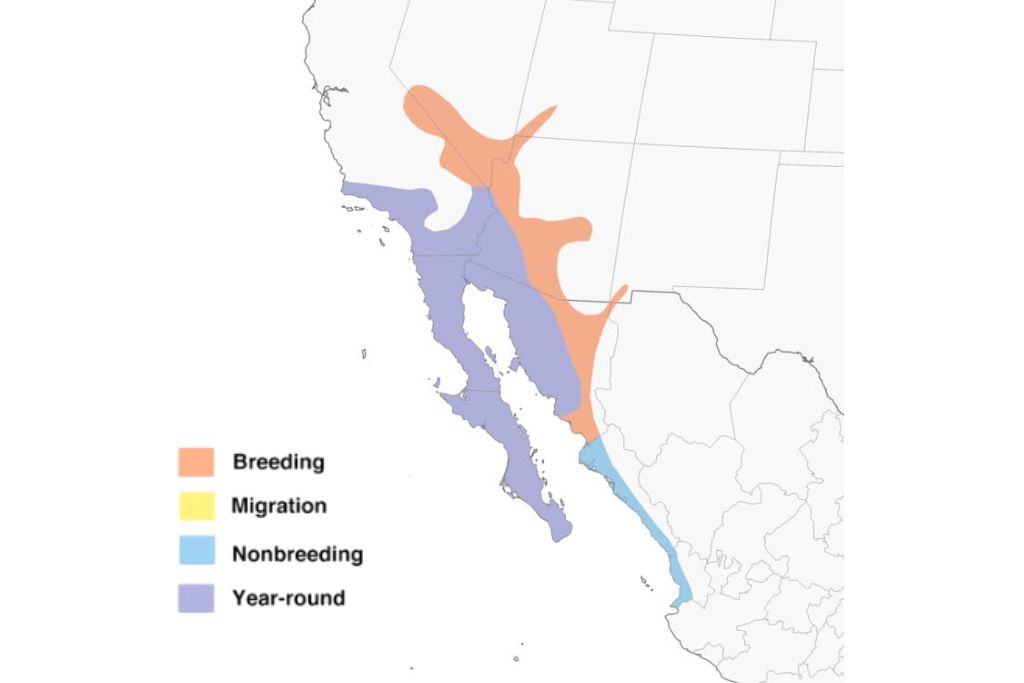
8. Calliope Hummingbird
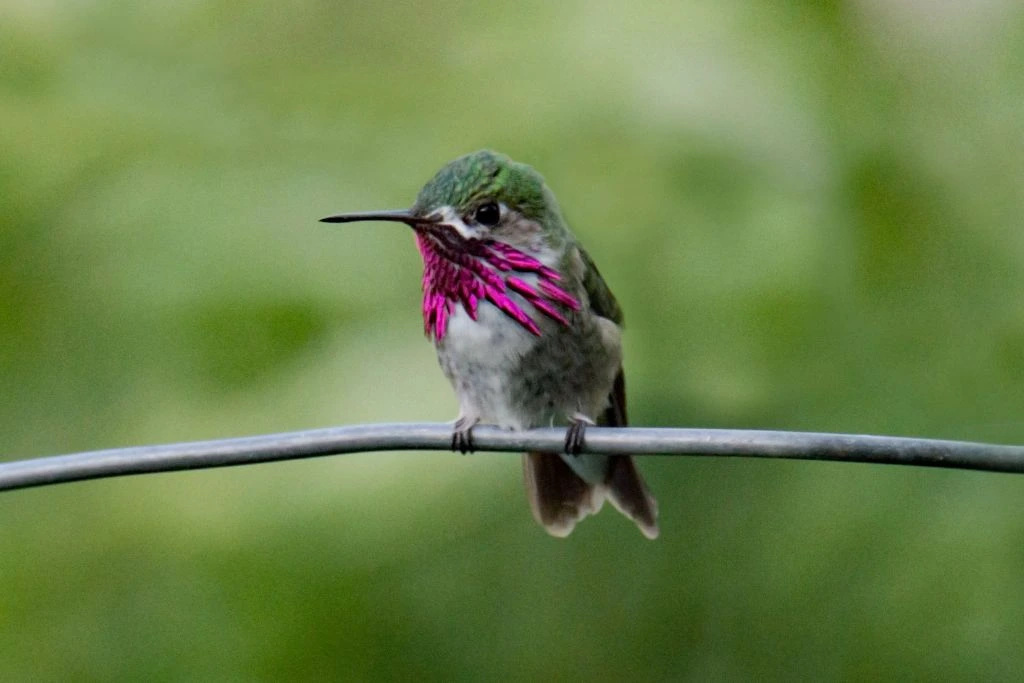
- Kingdom: Animalia
- Phylum: Chordata
- Class: Aves
- Order: Apodiformes
- Genus: Selasphorus
- Species: S. calliope
Calliope hummingbirds (S. calliope) are only about 3 inches long, the smallest bird species in North Florida. They have a greenish back and head, a white chest, and a throat patch with black and white stripes.
Most of these birds live in Western North America, especially in mountainous areas and coniferous woods. Hummingbirds typically live three to five years, although some have lived ten.
Although they eat insects, Calliope hummingbirds mostly feed on flower nectar.
During the breeding season, females build and hang cup-shaped nests from plant fibers and spider silk from trees. They will raise 2 eggs until they can fly.
Calliope Hummingbirds can be seen in Florida, but they rarely live in the location. Instead, they are more prevalent in Western states like Montana, Idaho, and Wyoming.
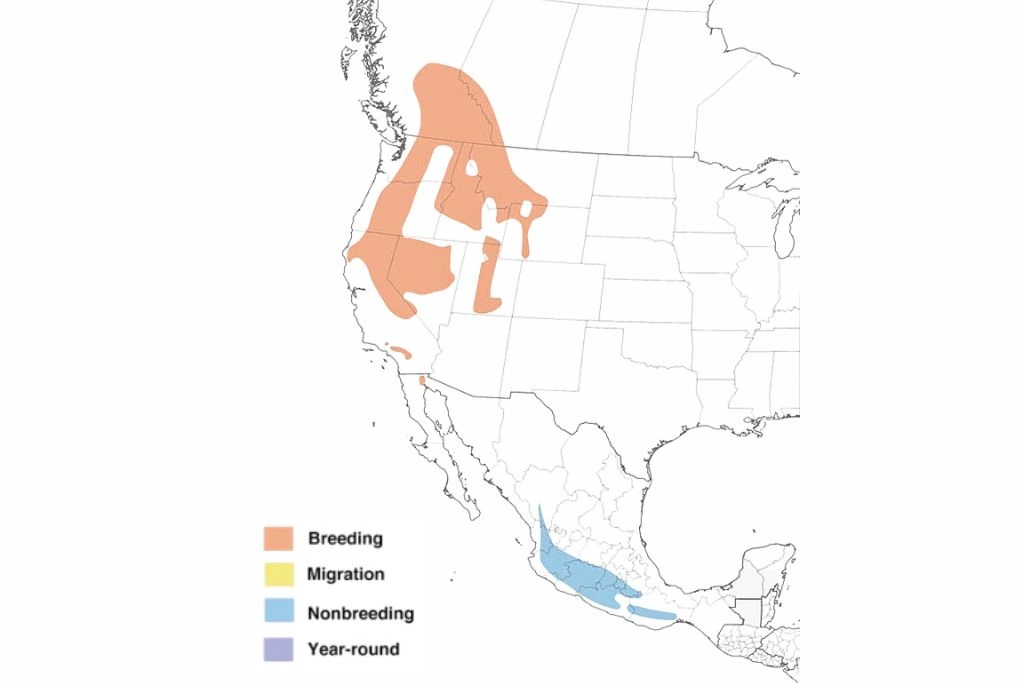
9. Broad-Tailed Hummingbird
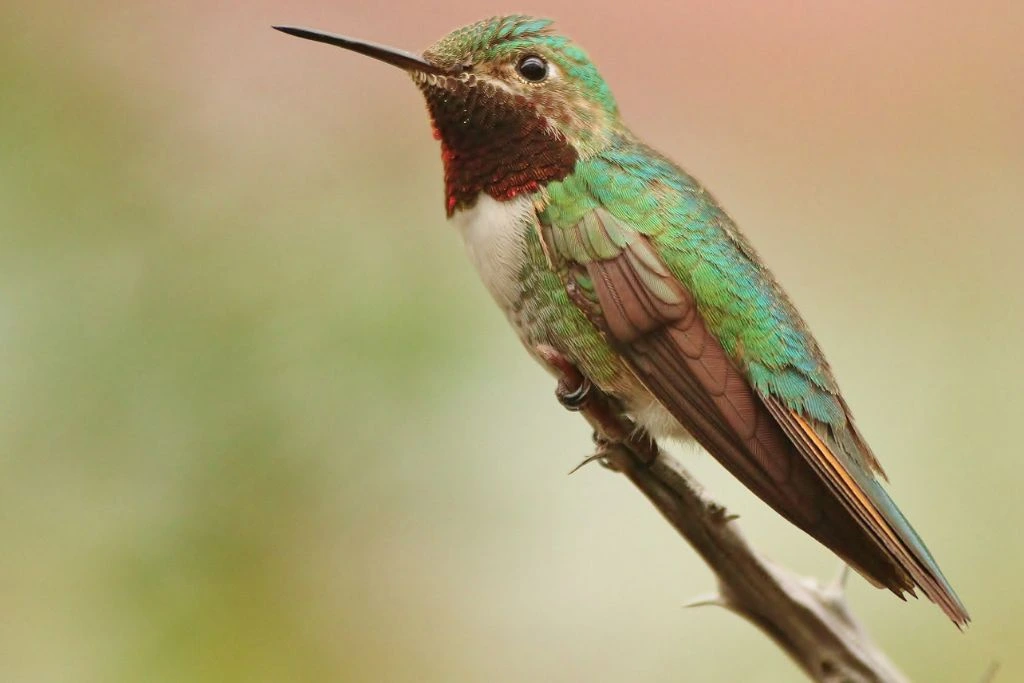
- Kingdom: Animalia
- Phylum: Chordata
- Class: Aves
- Order: Apodiformes
- Genus: Selasphorus
- Species: S. platycercus
Broad-tailed hummingbird (S. platycercus) is a small hummingbird species about 3.5 to 4 inches long. Males have shiny green backs and crowns, a bright rose-pink throat, and metallic chirping sounds made by their wings. Females have greener backs and pale gray bellies.
These hummingbirds are native to the Western United States and some parts of Mexico. They are known for their distinctive wing trill, produced by their rapid wingbeats.
While insects and tiny animals comprise the bulk of their diet, nectar from various flowering plants is a close second.
Nests of plant fibers are formed into cups and hung from tree limbs. The female lays 2 eggs and raises her young until they are ready to take flight.
Average lifespan of a hummingbird is 3–5 years, but some have been recorded at 10 years.
In Florida, you’re not likely to see any broad-tailed hummingbirds, yet they are occasionally spotted in Everglades National Park and the Florida Keys.
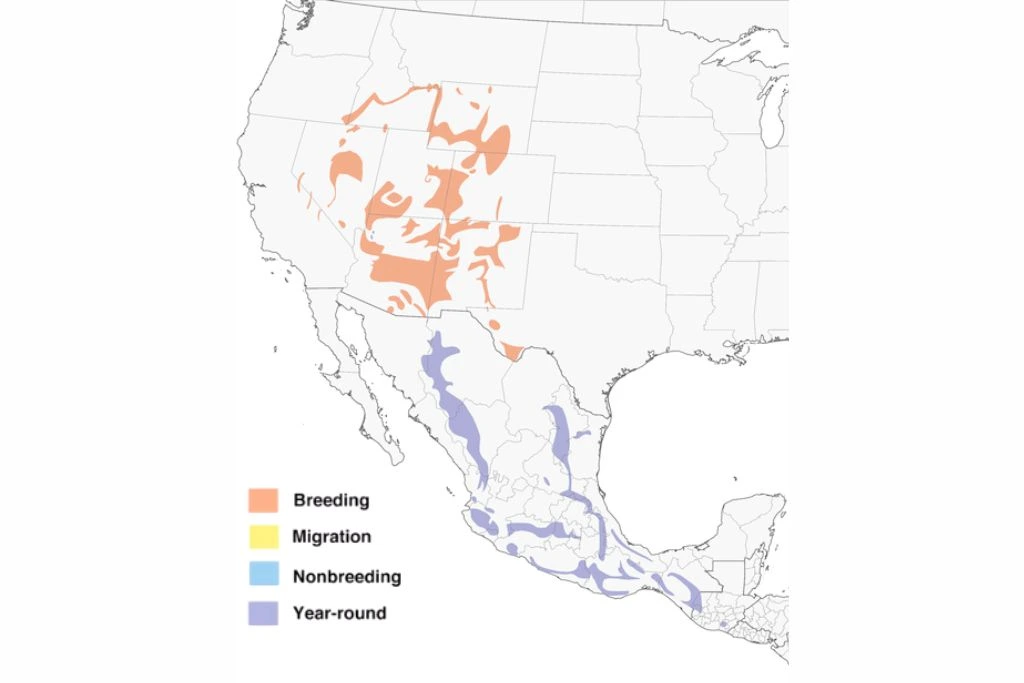
10. Broad-Billed Hummingbird
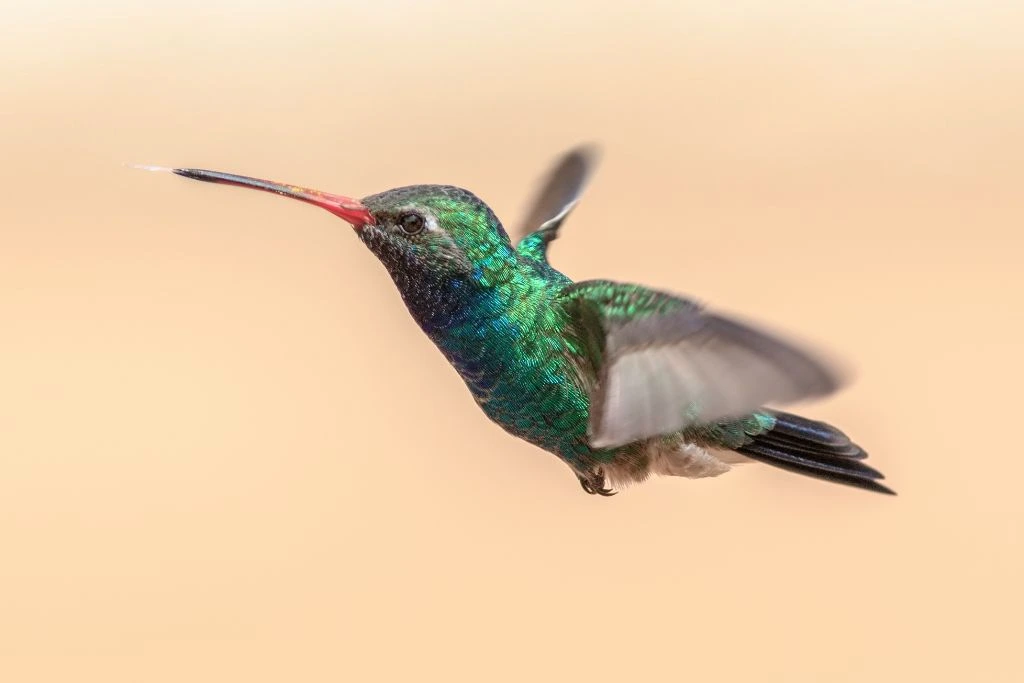
- Kingdom: Animalia
- Phylum: Chordata
- Class: Aves
- Order: Strisores
- Genus: Cynanthus
- Species: C. latirostris
When compared to other hummingbird species, the broad-billed hummingbird (C. latirostris) stands out due to its brilliant blue neck and emerald body.
Although they are winter in Mexico, you can spot them in the canyons of the American Southwest during the spring and summer breeding seasons.
While nesting, these hummingbirds bring a splash of color to residential gardens and shaded ravines. In addition to their vital role in pollination, broad-billed hummingbirds’ primary food source is the nectar of various flowering plants.
They are well-suited to places with lots of flowers, where they will fight hard to protect their eating grounds.
The females build cup-shaped nests out of plant fibers and spider silk. These species lay two eggs and raise their young until they are adults.
The average lifespan of a hummingbird is 3–5 years, but some have been known to live even longer.
Broad-billed hummingbirds are rarely seen in Florida. When they are, they are usually near the southern coast or in the Keys. This is because they are only temporary visitors to the state.
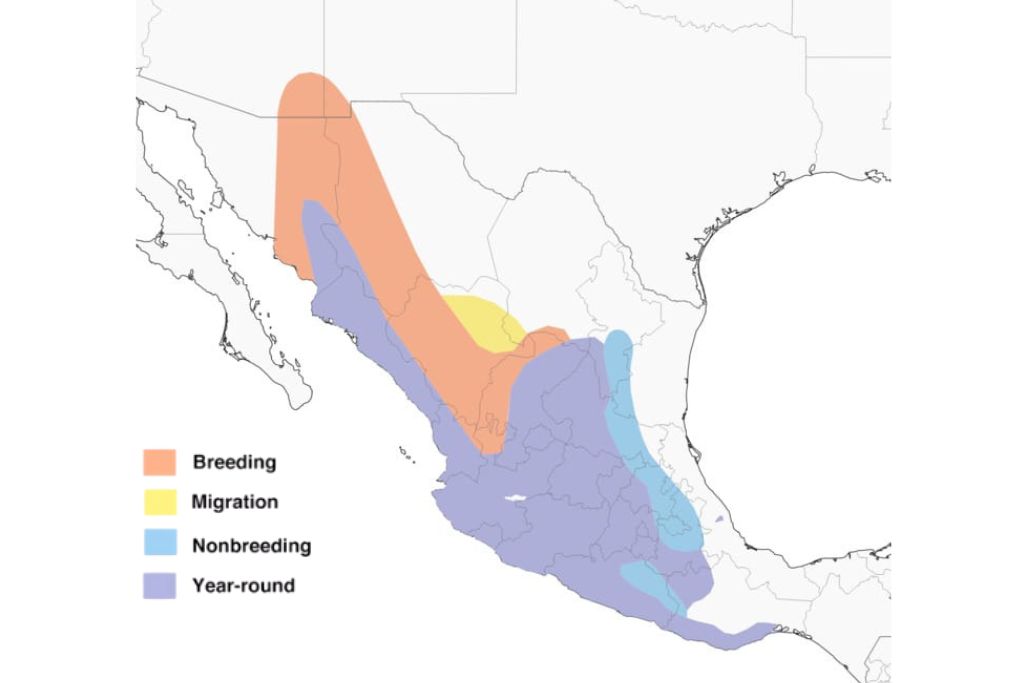
11. Buff-Bellied Hummingbird
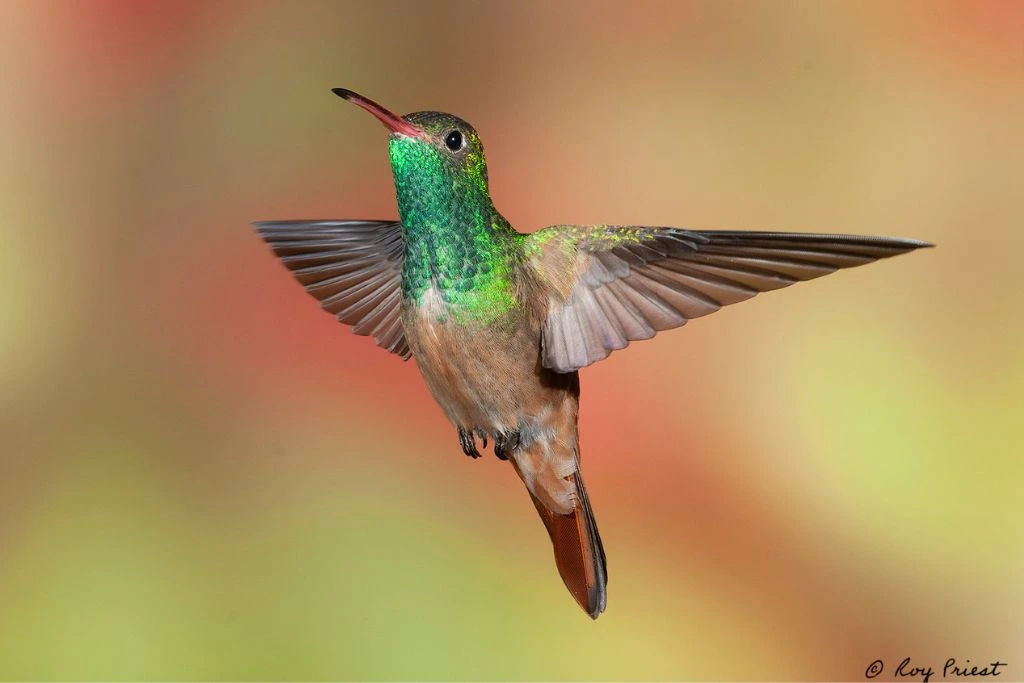
- Kingdom: Animalia
- Phylum: Chordata
- Class: Aves
- Order: Apodiformes
- Genus: Amazilia
- Species: A. yucatanensis
The buff-bellied hummingbird (A. yucatanensis) is a medium-sized hummingbird species about 3.9 to 4.3 inches long. Males have a bright green back, cinnamon-buff underparts, and a shiny green head. Females have lighter heads than males.
These hummingbirds live mostly in Mexico, but some can be found in Texas and Louisiana. They inhabit woodlands, parks, and brushy regions near water.
Buff-bellied hummingbirds feed on flower nectar, especially tubular blossoms. They also feed on tiny insects.
During the breeding season, females build cup-shaped plant fiber nests and hang them from trees or bushes. They hatch two eggs and raise them until they can fly.
Hummingbirds typically live 3 to 5 years, although some survive up to 10.
Humans rarely see these hummingbirds, but you can, mainly near the Gulf Coast and the Florida Keys.
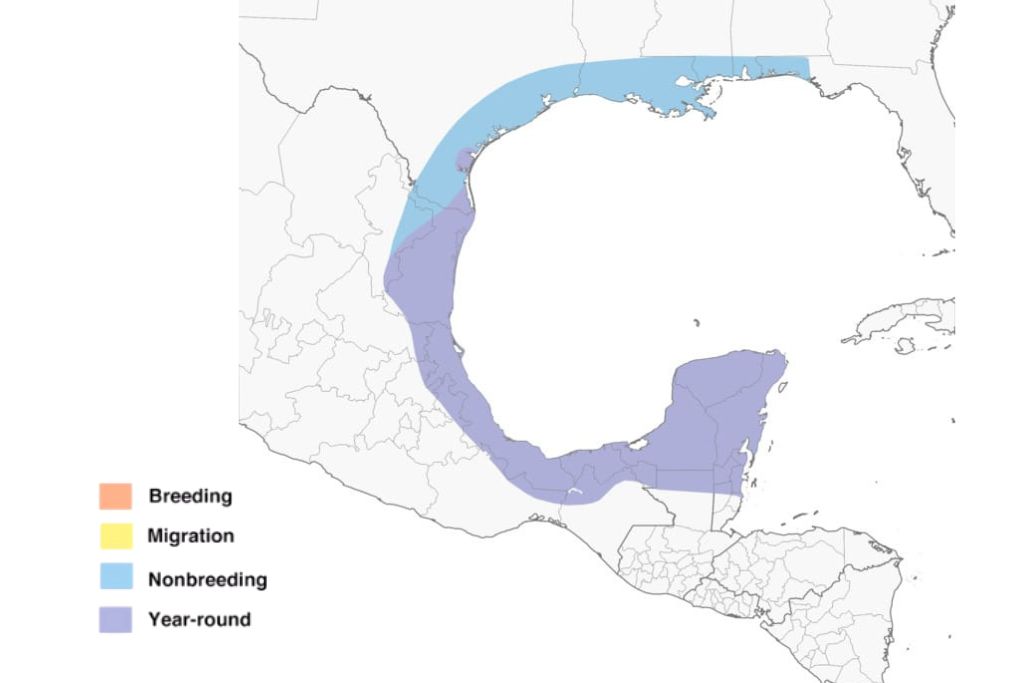
FAQs
Are Hummingbirds Good to Have Around?
Yes. Hummingbirds are beneficial pollinators, helping with plant reproduction. They also consume large numbers of insects, contributing to natural pest control.
What Attracts Hummingbirds?
Hummingbirds are attracted to brightly colored flowers, especially those with tubular shapes and high nectar content. Feeders filled with sugar water also attract them.
What are Hummingbirds Known for?
They are known for being small, fast, and can hover. Some animals migrate long distances and have the fastest wing beats.
Is a Hummingbird a Symbol of Good Luck?
No. Most cultures don’t consider hummingbirds good luck, despite their beauty. They symbolize different things to different cultures and beliefs.
What is Hummingbird Season in Florida?
Spring and fall are Florida’s hummingbird seasons. On their way to and from breeding areas, they pass through Florida. They migrate north to breed in Florida from late February to early May. From late August until early November, they winter south.
Are There Living Hummingbirds in South Florida?
Yes. Some examples are the ruby-throated hummingbird, Bahama woodstar, black-chinned hummingbird, Anna’s, Costa’s, Allen’s, and broad-billed hummingbirds.
As of today, Do North Florida Hummingbirds Exist?
Yes, hummingbirds do exist in North Florida. The specific species of hummingbirds that can be seen in North Florida include the ruby-throated hummingbird and the Rufous hummingbird.
What Month are Hummingbirds Most Active?
The spring and summer are the busiest times for hummingbirds. They are very active birds that are most active during these colder months. During this time, hummingbirds do things related to breeding.
Do Hummingbirds Migrate to Florida in The Winter?
Yes, hummingbirds do spend the winter in Florida. Some hummingbirds live in Florida yearly, but many others leave their breeding grounds. In North America, like Florida, people are moving to better places.

